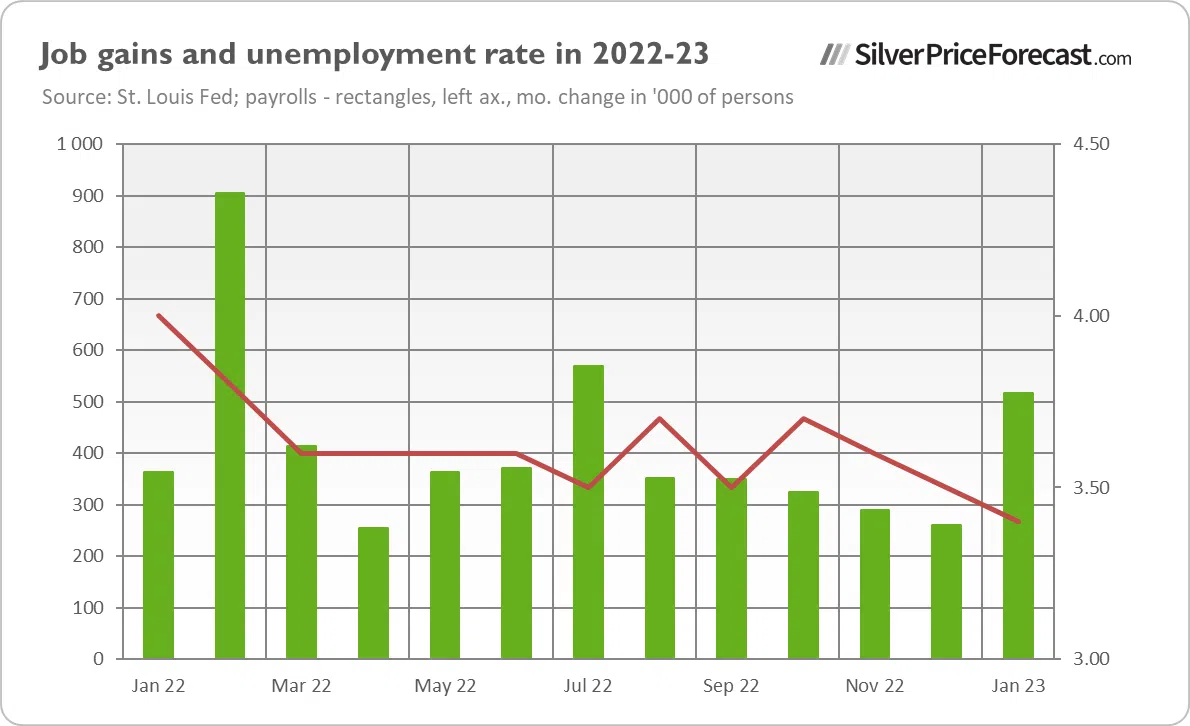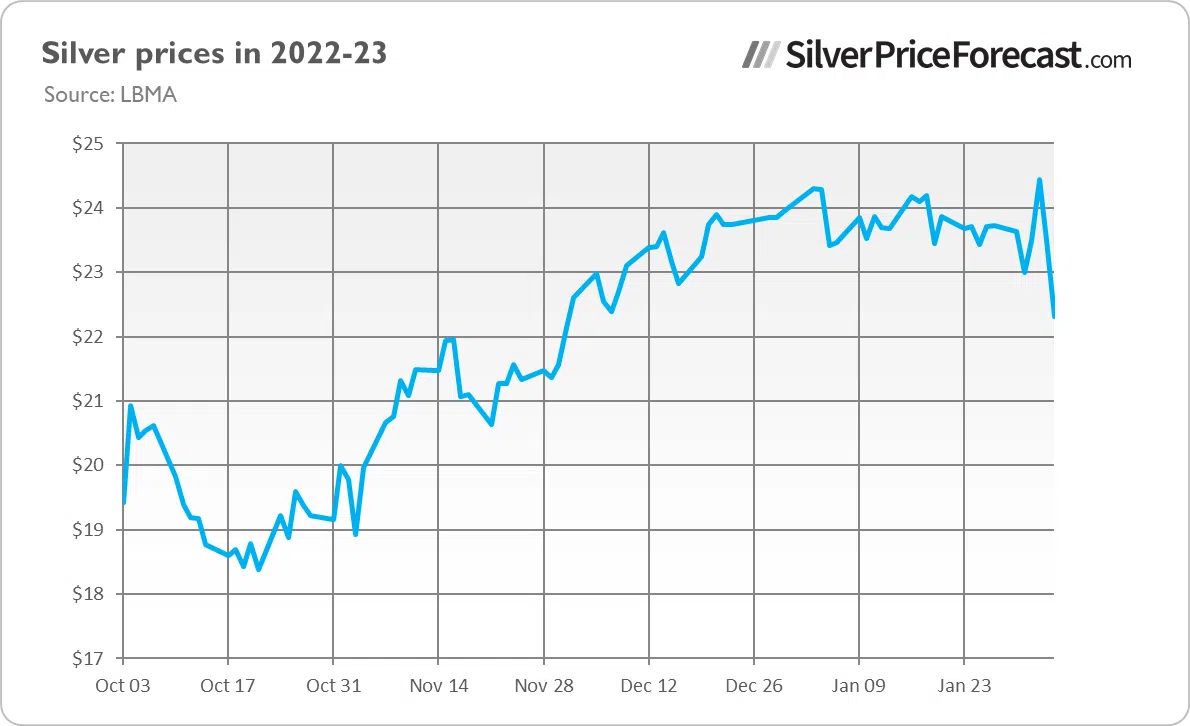Big Job Gains Plunge Silver
The labor market remains hot, freezing silver out.
The US labor market added as many as 517,000 jobs in January, according to the BLS (see the chart below). The job gains were widespread and more than twice as large as in December (+260,000), and it was also significantly greater than an average monthly gain of 401,000 in 2022. But more importantly, the headline number came much above expectations (+187,000), triggering turbulence in the markets.

What’s more, the unemployment rate declined from 3.5% to 3.4% (see the chart above), the lowest level since 1969. Hence, the U.S. labor market still shows great resilience during the Fed’s tightening cycle. Last but not least, the average hourly earnings increased by 4.4% in January, which means a slowdown from 4.8% seen in December.
Strong Labor Market Implies Hawkish Fed
The surprisingly strong Employment Report suggests that the U.S. labor market is still running hot, possibly too hot for the Fed. I’m not certain whether the tight labor really indicates the strength of the U.S. economy, as it partially results from the fact that, due to the long Covid, the labor force participation rate hasn’t recovered to pre-pandemic levels.
However, the strong numbers will allow the Fed to keep its tight monetary policy longer than expected and hike the interest rates to a higher level than markets previously saw as likely. According to the CME FedWatch Tool, the probability of a 25-basis-point hike at the FOMC May policy meeting rose on Friday to 60% (now it’s 48%) from 34% just before the release of the jobs report.
Implications for Silver
What does the blowout jobs report imply for the silver market? Well, the solid nonfarm payrolls strengthened the expectations of a more hawkish Fed, which pushed the precious metals down. As the chart below shows (courtesy of silverpriceforecast.com), the price of silver slid from $23.5 to below $22.5 on Friday.

However, the strong job market and the following drop in the price of silver are paradoxically positive for the precious metals market in the long run. Why? The main reason is that now the market expectations are more aligned with the Fed’s forecast and communication. It implies smaller downside risks for silver in the future. Additionally, more rate hikes increase the odds of the Fed’s overtightening and a following recession, which should increase the safe-haven demand for silver and gold.
Arkadiusz Sieron, PhD